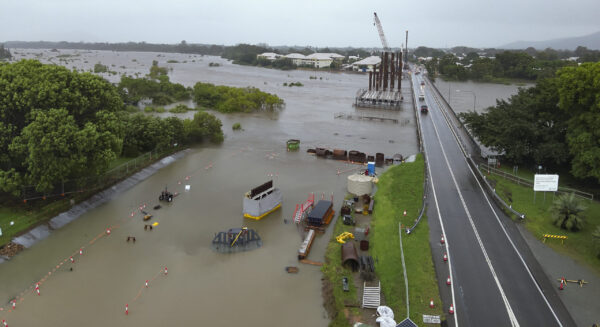That’s the view of academic Dr Tanya Fiedler of the UNSW, internationally recognised for her work in climate risk accounting and accountability.
She says business at present cannot accurately calculate their exposure to climate disasters and so face accusations of greenwashing and greenhushing by failing to do so.
She points out that in January, new laws on mandatory climate reporting requirements affecting more than 6000 organisations took effect.
These laws are better inform investors about exposure to climate change, encourage spending in disaster mitigation and introduce greater adaptability in the face of increasingly bad weather (storms, bushfires and the like).
GLOBAL TREND
The UNSW says countries are in the process of developing standards and regulatory mandates based on the Taskforce on Climate-related Financial Disclosures (TCFD), which has been convened by the Financial Stability Board, which monitors the global financial system.
The board’s role is to identify threats that might potentially cause another global financial crisis – and they says climate change poses a risk to global financial stability.
“The TCFD recommendations were pivotal in bringing about changes to the reporting landscape because they drew a direct link between the risks of climate change and financial risk,” Dr Fielder says.
“(It argued) that climate-related risks should flow through into financial reporting obligations in the same way that any other risks do.”
RISK CATEGORIES
According to the UNSW, there are two main types of climate risks.
- The first is transition risk involving the switch to a low or zero carbon economy such as companies heavily dependent on fossil fuels making the switch and considered vulnerable since they are unlikely to survive the change.
“Transition risks can be understood as an economic problem,” explains Dr Fiedler.
“As nations move to zero-carbon economies, government policies, global markets, supply chains, technological advances and consumer preference will influence how businesses operate, including decisions about which products or services to produce.
“Because these changes are economic in nature and can be conceptualised in economic terms, they are familiar to people in business,” she says.
- The second risk is physical such as damage done to housing and infrastructure through things like fire, flooding, storms and drought.
“Unlike transition risk, when analysing physical risk, organisations rely on models and information sources developed in the climate sciences. These, in contrast to the economic models underpinning assessments of transition risk, are deeply unfamiliar to business,” says Dr Fiedler.

PHYSICAL RISK
The problem with understanding physical risk is a reliance on climate model projections in one form or another, she points out.
“The models underpinning such projections were largely built to provide information relevant for questions at global scales, not for questions of risk relevant at the scale of a business,” she points out.
“The models were built to provide information for global politics and policy negotiations … they can be incredibly complex because you are trying to model the physics of the entire earth but scaling them down to understand the impact at the level of an organisation is fraught with problems.”
Dr Fielder says the response to climate risk disclosure requirements has been the spawn of an entire industry dedicate to supplying risk summaries based on proprietary models in what has been described as a “climate intelligence arms race”.
“In effect, we’re trying to build an entirely new system of accounting in a period of a decade whereas financial and cost accounting have developed over centuries,” Dr Fielder says.
“… so what you have is a massive investment in climate intelligence by global service providers.
“To my knowledge, however, none of the models, algorithms, or methods they use have been peer-reviewed by scientists and academic research is increasingly showing the outputs of such work to be problematic.”
FINANCIAL COST
Climate Council councillor and economist Nicki Hutley says Alfred pounded Qld and NSW — and now the Federal Budget.
“The Treasury has estimated a $1.2 billion hit to the Budget and a threat to inflation. A decade of climate inaction is costing all of us dearly, with massive clean-up bills and over 63,000 insurance claims currently lodged in the wake of Alfred,” she says.
“We know the average cost to Australian households of extreme weather in 2022 was $1532 with higher taxes, rising insurance, more uninsured damage and higher prices paid due to supply chain disruptions all factored in.
“This figure is expected to rise to more than $2500 per household by 2050.
“We all pay for climate pollution, with every major disaster sending our cost of living through the roof. Australians are paying $30 billion more today on insurance than they were only 10 years ago.”
Scientists warn that for every degree of global warming, Australians will experience 7-28 per cent more rain for hourly events, and 2-15 per cent more for longer duration events while 5 per cent is the base used in flood planning standards.
Climate Councillor, Professor David Karoly says four million Australians along the east coast were in the “firing line” of Alfred.
“As this report explains, climate pollution from coal, oil and gas, means the world’s oceans are absorbing vast amounts of excess heat, with devastating consequences that are now unfolding,” he says.
“Today, we are putting more than 10 zetajoules of extra heat energy into the ocean each year – the equivalent of five Hiroshima bomb explosions every second.”






